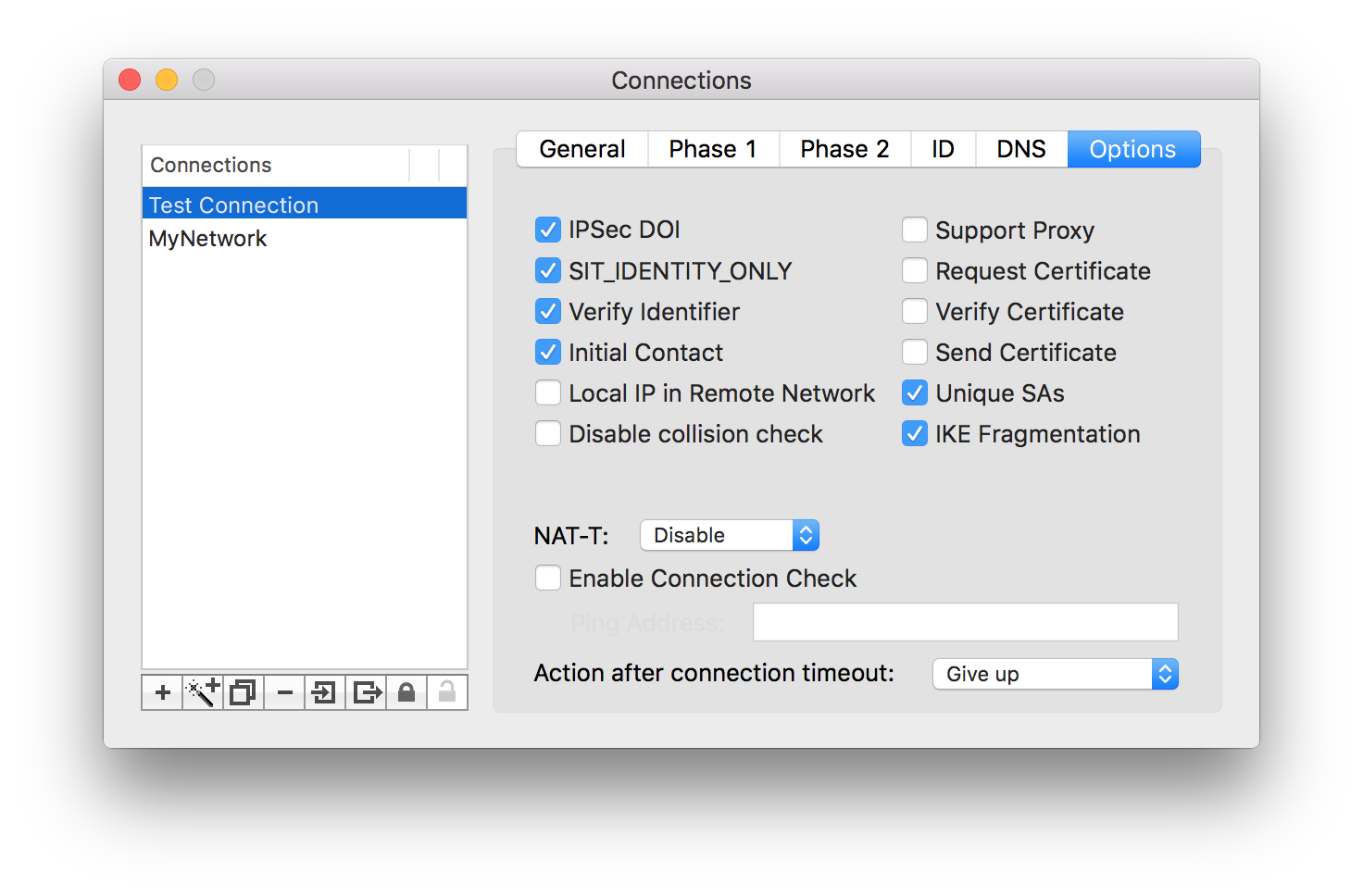

Routing All Traffic through the SonicWall allows an administrator to protect a user by enforcing Intrusion Prevention, Gateway Anti-Virus, Anti-Spyware, Client Anti-Virus, Content Filtering, and other policies on remote users’ traffic. Traffic from the GVC client destined for the Internet will be routed to the UTM device's WAN gateway router and traffic destined for the LAN and other internal networks will be routed as per the routing logic which applies to local hosts. Once traffic from remote users' GVC computers to the UTM network is decrypted and encapsulated from the VPN, the original destinations of the traffic from the remote computer are honored and used for routing.

#Using ipsecuritas with sonicwall software#
The result is that remote computers with SonicWall Global VPN Client (GVC) software connected to the policy will route all Internet traffic through its VPN connection to the UTM network.
#Using ipsecuritas with sonicwall how to#
This article will show users how to configure a 'Route all Traffic' WAN GroupVPN Policy on a SonicWall UTM appliance. Copy URL The link has been copied to clipboard.Content Filtering Client Control access to unwanted and unsecure web content.Capture Client Stop advanced threats and rollback the damage caused by malware.Cloud Firewall (NS v) Next-generation firewall capabilities in the cloud.Cloud App Security Visibility and security for Cloud Apps.Email Security Protect against today’s advanced email threats.Switches High-speed network switching for business connectivity.Wireless Access Points Easy to manage, fast and secure Wi-Fi.Secure Mobile Access Remote, best-in-class, secure access.Cloud Edge Secure Access Deploy Zero-Trust Security in minutes.Capture Security appliance Advanced Threat Protection for modern threat landscape.Capture ATP Multi-engine advanced threat detection.Network Security Manager Modern Security Management for today’s security landscape.Security Services Comprehensive security for your network security solution.Next Generation Firewall Next-generation firewall for SMB, Enterprise, and Government.I’ve looked through the CLI at the configuration specifically for the VPN and don’t see a reference to disabling/enabling the VPN configuration so perhaps the development is in the works.

Disabling the Site-to-Site and saving the configuration results in no change to the tunnel status and upon inspecting the configuration the Enabled checkbox doesn’t toggle to disabled. If you want to see the status from the USG, you can log into the CLI and type the command “show vpn ipsec status” which will indicate if the IPsec tunnel is active.Īnother small issue I’ve noticed is the check box to disable the VPN connection on the USG side doesn’t seem to work. From the SonicWALL side, you will however see the familiar green circle indicating the VPN is live and you will be able to pass traffic over the tunnel. Unfortunately, from the USG GUI there is no indication that the VPN is established. Disable perfect forwarding secrecy and dynamic routing, then save your configuration. Change your Key Exchange Version to IKEv2 with 3DES Encryption SHA1 Hash and Diffie-Hellman Group 2. Plug in your Peer and Local information, along with your Remote Subnets and Pre-Shared Key. This opened all the familiar options that are necessary to get this functional. Under Settings -> Network I chose the Site-to-Site VPN radio button option along with the IPsec VPN Type below. The USG side required a bit more customization away from its defaults to match up with the SonicWALL default proposal. Leave the proposals at their defaults and finally check “Enable Keep Alive” on the Advanced tab. The SonicWALL side was straightforward - configure the primary gateway, shared secrets, and ID’s on the General configuration tab:Ĭonfigure the Local and Remote networks on the Network tab.


 0 kommentar(er)
0 kommentar(er)
